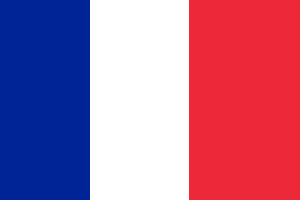Strategic Oceanic Force
| |||||||||||||||||||||||||||||
The Force océanique stratégique (FOST; English Strategic Oceanic Force) is the ballistic missile submarine force of the French Navy. It is one of the two components of the submarine forces of the French Navy and the sea-based component of the French nuclear deterrent.
History

The FOST was created in the early 1960s, around the need for France to operate her own nuclear deterrence. The creation took 13 years, with the challenges of creating nuclear reactors small enough to be fitted in submarines, design of ballistic missiles, design of nuclear warheads, and eventually integration of all the components with the construction of Redoutable in 1972.
Five other SNLE (Sous-marin nucléaire lanceur d'engin) have been commissioned since. In 1996, President Chirac decided the four-vessel size of the force. In the following years, this number was maintained by decommissioning the older SNLEs while the newer SNLE-NGs were commissioned.
The strategic submarines are based at Île Longue, near Brest harbour. The command post of the force is located at Brest, after having been relocated from Houilles, Yvelines.[1] The command post may now be located in the Château de Brest near the city.
Mission
The mission of the FOST is to have at least two SNLE at sea at any moment, capable of striking should the need arise.
Chain of command
The organic chain of command deals with the preparation of the units for their missions, which depends on the chef d'état-major de la marine (CEMM, chief of staff of the Navy).
The operational chain of command deal with the use and security of the forces. They are under the chef d'état major des armées (CEMA, chief of staff of the Armies, translated, Chief of the Defence Staff (France)). As such, ALFOST is responsible for the planning of the movements of the submarines, of their control while at sea, and of transmitting the necessary orders.
Only the President of the Republic is authorised to launch nuclear weapons; an officer of the French military is always to be present near him, carrying a briefcase with the necessary equipment to authorise a launch. [2]
References
- ↑ Norris, Robert S.; Arkin, William M.; Kristensen, Hans M.; Handler, Joshua (1 July 2001). "French Nuclear Forces, 2001". Bulletin of the Atomic Scientists. Retrieved 23 June 2015 – via HighBeam Research. (subscription required (help)).
- ↑

